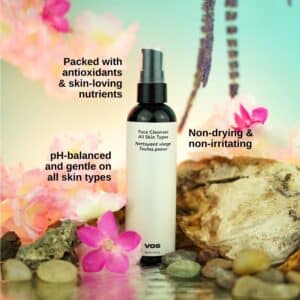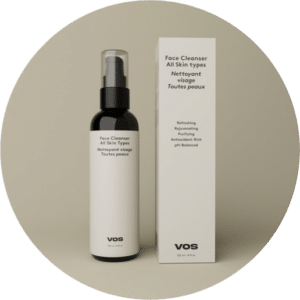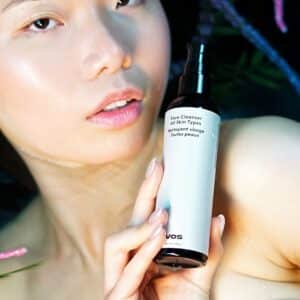Establishing a skincare routine starts with one essential step: cleansing. Without a clean surface, serums and moisturizers can’t be as effective. The right face cleanser sets the tone for every product that follows. Whether your skin is oily, dry, sensitive, or combination, selecting a cleanser tailored to your needs is crucial for maintaining skin health.
In this article, we’ll explore how to choose a suitable cleanser, examine different types available, and list recommended options for each skin type to help you begin your skincare routine with clarity and care.
Why Cleansing Is the First Step in Any Skincare Routine
A facial cleanser removes dirt, oil, and other impurities that build up throughout the day or while you sleep. Proper cleansing prevents clogged pores, dull skin, and breakouts. It also prepares your skin to absorb other products in your regimen more effectively.
Skipping this step or using a harsh cleanser can disrupt your skin’s natural barrier, leading to dryness or irritation. That’s why the product you choose for cleansing is foundational to a balanced skincare routine.

Understanding Your Skin Type Before Choosing a Cleanser
Before selecting a cleanser, it’s important to identify your skin type. Here are the most common types and their characteristics:
Normal Skin
- Balanced moisture and oil levels
- Rarely experiences breakouts or sensitivity
- Smooth texture
Oily Skin
- Excess sebum production
- Enlarged pores
- Prone to acne and shine
Dry Skin
- Tight or flaky texture
- Lacks oil and moisture
- May feel rough or irritated
Combination Skin
- Oily in the T-zone (forehead, nose, chin)
- Dry or normal in other areas
Sensitive Skin
- Easily irritated by products
- Redness, stinging, or burning sensations
- Requires gentle formulations
Knowing your skin type ensures the face cleanser you choose supports — not disrupts — your skin’s balance.
Types of Face Cleansers
Face cleansers come in various forms. Each has a unique texture and formulation that serves different skin concerns. Understanding the benefits of each type helps you make an informed decision for your skincare routine.
Gel Cleansers
Best for: Oily and acne-prone skin
Gel cleansers are lightweight and formulated to deeply cleanse pores. They effectively remove excess oil and impurities without leaving residue. Many include ingredients like salicylic acid or tea tree oil for acne control.
Cream Cleansers
Best for: Dry and sensitive skin
Cream cleansers have a rich texture that provides hydration while cleansing. They are less likely to strip the skin’s natural oils and help retain moisture, making them suitable for skin that needs extra care.
Foam Cleansers
Best for: Combination or oily skin
Foaming cleansers start as a cream or gel and transform into foam. They offer a deep clean and remove oil but may be too drying for sensitive or dry skin types.
Micellar Water
Best for: All skin types, especially sensitive skin
Micellar water contains tiny cleansing molecules (micelles) that trap impurities. It’s gentle, requires no rinsing, and works well as a morning cleanser or makeup remover.
Oil-Based Cleansers
Best for: All skin types, especially those using makeup or sunscreen
Oil-based cleansers dissolve makeup, SPF, and excess sebum. They are often used as the first step in a double-cleansing method to ensure a thorough clean without disrupting the skin barrier.

Ingredients to Look for in a Face Cleanser
When reviewing face cleanser labels, certain ingredients signal a product’s suitability for specific skin concerns:
- Salicylic Acid – Helps unclog pores and control oil
- Glycerin – Attracts and retains moisture
- Ceramides – Restore and maintain the skin’s barrier
- Niacinamide – Calms inflammation and strengthens skin
- Aloe Vera – Soothes irritation and hydrates
- Lactic Acid – Gently exfoliates and improves texture
Avoid harsh sulfates, alcohols, or synthetic fragrances, especially if your skin is dry or sensitive.
How to Use a Face Cleanser Properly
Using the best cleanser for your skin is only effective when applied correctly. Follow these steps to ensure a thorough and non-damaging cleanse:
- Wash your hands before touching your face to avoid transferring bacteria.
- Use lukewarm water, not hot, which can dry out your skin.
- Apply a small amount of cleanser to your fingertips and gently massage it into your face for about 30 seconds to one minute.
- Rinse thoroughly and pat your skin dry with a clean towel — avoid rubbing.
- Follow up with toner, serums, moisturizers, or treatments according to your skincare routine.
Double cleansing (starting with an oil-based cleanser followed by a water-based one) can be useful in the evening if you wear makeup or sunscreen.
How Often Should You Cleanse?
For most skin types, cleansing twice daily — morning and evening — is recommended. However, if your skin is very dry or sensitive, once in the evening might be sufficient, with a splash of water or micellar water in the morning.
Over-cleansing can strip the skin of its natural oils, leading to irritation or increased oil production, so it’s important to find a balance.
Conclusion
Choosing the right cleanser is a key step in developing an effective skincare routine. Whether your skin is dry, oily, or somewhere in between, the best face cleansers to start your skincare routine right are those that clean without compromising your skin’s natural balance.
Focus on products that suit your skin type, include supportive ingredients, and contribute to a consistent, thoughtful regimen. Starting your day and ending your night with the right cleanser can make a noticeable difference in the health and appearance of your skin.




